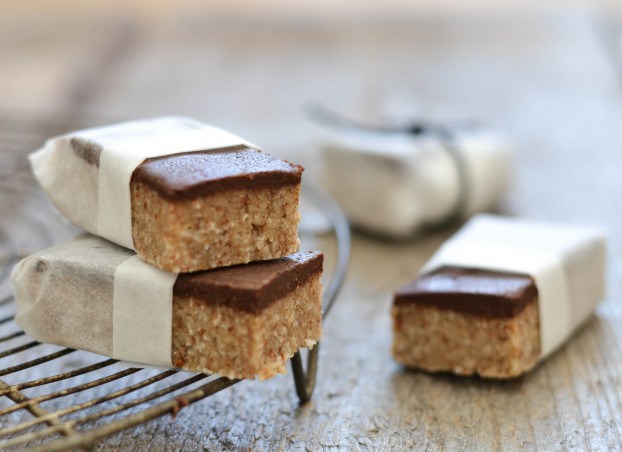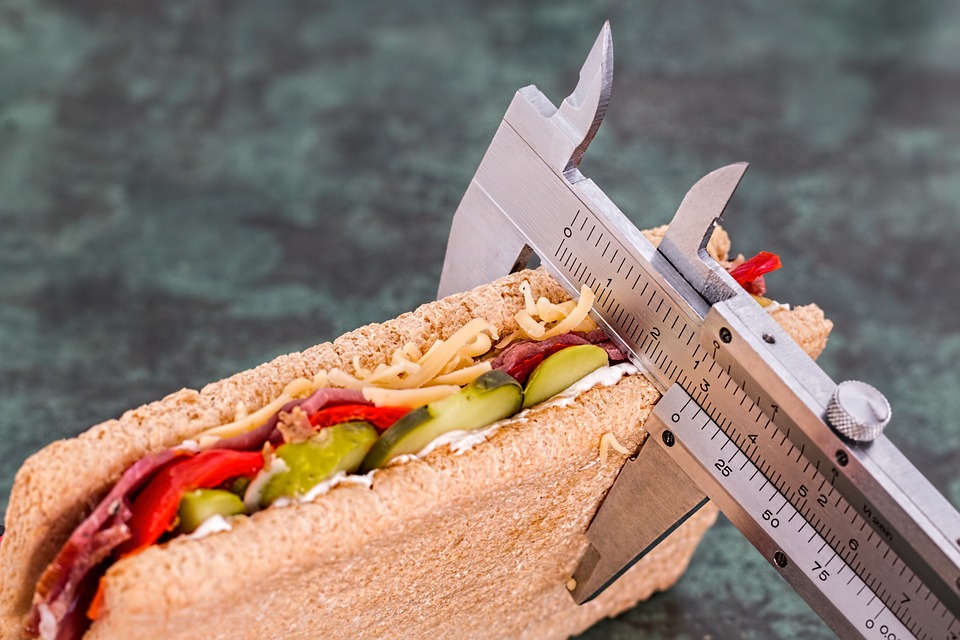
Many preppers who want to be self-sufficient start a home garden so they can grow fresh, organic fruits and vegetables for their family. If you have excess crops, you can also preserve fruits and veggies for your survival stockpile.
But if you want to make the most of your garden crops, think of the gardening calories resulting from your vegetable garden. This means carefully choosing which vegetables to grow and the number of calories that you will get from those vegetables. (h/t to ModernSurvivalBlog.com)
Gardening calories and sustainability
Another option is to plan on gardening to be a significant or exclusive source of calories together with other food sources, like raising other protein foods and livestock.
You need to plan ahead because what you grow in your garden may be the only thing you can eat when SHTF and you can no longer get more supplies at the grocery store.
Before disaster strikes, you need to learn how to maximize your caloric return for your time and effort when you're growing a vegetable garden to feed your family without other ways to get more supplies.
When it comes to survival, preparedness and self-sufficiency, crops you harvest from your garden will need to produce calories. However, many vegetables are low and very low in calories.
Fortunately, there are some vegetables that contain more calories than others.
Gardening calories in vegetables
All caloric quantities in the vegetable list below have been normalized to 100 grams (3.5 ounces) to compare properly.
Note that some of the foods are not typically consumed in these amounts, but the results will let you know where they are when it comes to calories. Nutrition is not accounted for in this list.
The food calorie data for each item was determined based on the common method of consuming the item, like some vegetables are consumed raw while others are typically boiled or cooked a certain way.
Normalized to 100 grams (3.5 ounces):
- Beans (Pinto, navy) (143 calories)
- Yams (116 calories)
- Potato (86 calories)
- Corn (86 calories)
- Green peas, Green (84 calories)
- Sweet potato (76 calories)
- Parsnip (71 calories)
- Concord grapes (67 calories)
- Blueberries (57 calories)
- Acorn squash (56 calories)
- Raspberries (52 calories)
- Kale (50 calories)
- Beets (44 calories)
- Onion (42 calories)
- Snap peas (42 calories)
- Carrots (41 calories)
- Chili peppers (40 calories)
- Brussels sprouts (36 calories)
- Broccoli (35 calories)
- Green beans (35 calories)
- Eggplant (35 calories)
- Cantaloupe (34 calories)
- Strawberries (32 calories)
- Leeks (31 calories)
- Chives (30 calories)
- Jalapeno peppers (29 calories)
- Basil (27 calories)
- Collard greens (26 calories)
- Sweet peppers (26 calories)
- Cauliflower (25 calories)
- Spinach (23 calories)
- Okra (22 calories)
- Turnip (22 calories)
- Cabbage (22 calories)
- Asparagus (22 calories)
- Rhubarb (21 calories)
- Pumpkin (20 calories)
- Bell peppers (20 calories)
- Tomato (18 calories)
- Zucchini (16 calories)
- Radish (16 calories)
- Lettuce (15 calories)
- Cucumber (15 calories)
- Celery (14 calories)
Generally, vegetables are not very calorie dense. Some notable exceptions are corn and potatoes.
But if you want to maximize all the effort you put into your survival garden, you should prioritize calories to maximize the garden's output based on the diversification of nutrition and the things that you like to eat. When SHTF, calories are going to be crucial when the whole family is in "survival mode."
When disaster strikes, you should plan ahead so you have other food sources aside from your home garden. You can also start growing fruit trees and bushes or shrubs.
If you have the space to do so, raise animals like chickens, goats or pigs.
You also need to account for failure, which is a normal part of prepping. Learn from your mistakes and try to control what you can control.
Low-calorie vegetables are still good for you
If you like eating low-calorie but nutritious vegetables like juicy tomatoes, you can still grow them in your home garden.
However, when it's time to start planting, dedicate most of your time and effort on high-calorie crops that will help you feel full longer, like beans and potatoes.
For example, if you have excess crops of regular potatoes, you can process or home can them or leave them in cool, dry and dark storage. (Related: Food storage tips: How to dehydrate foods for long-term storage.)
Hearty recipes using high-calorie veggies
Try these recipes using high-calorie veggies like beans, corn and potatoes.
Pinto beans and ground beef with rice
This recipe includes protein-rich pinto beans, carrots, onions and ground beef to make a filling dish.
Ingredients for four servings:
- 1 Pound 80 to 85 percent lean ground beef
- 2 (15-ounce) cans pinto beans, drained and rinsed
- 1 (14.5-ounce) Can diced tomatoes (with liquid)
- 1 (4-ounce) Can mild chopped green chiles (not drained)
- 1 1/2 Cups long-grain white rice (You can also use brown rice.)
- 1 Cup onions, diced
- 1/2 Cup carrots, diced
- 1/2 Cup green bell pepper, diced
- 1/2 cup red, orange, or yellow bell pepper, diced
- 3 Tablespoons tomato paste
- 1 Tablespoon extra-virgin olive oil
- 1 Teaspoon kosher salt, or to taste
- 1 Teaspoon spicy chili powder blend
- 1/4 to 1/2 teaspoon chipotle powder, or ancho (Optional)
- 1/4 Teaspoon freshly ground black pepper
- 1/4 Teaspoon dried oregano
Preparation:
- Gather all the ingredients.
- Heat the olive oil in a large, deep skillet or Dutch oven over medium heat.
- When the oil is hot and shimmering, add the ground beef, onion and carrot to the skillet. Use a wooden spoon or spatula to break the beef up.
- Cook the beef mixture until the meat is no longer pink. Stir frequently and drain off excess drippings.
- Add the pinto beans, bell pepper, tomatoes, tomato paste, chopped green chiles and seasonings to the beef.
- Bring the mixture to a simmer, then reduce the heat, cover and continue simmering over low heat for 20 to 25 minutes.
- Cook the rice and follow package directions. When the rice is ready, fluff and keep warm.
- Serve the beans with rice and a tossed green salad with some cornbread wedges or cornbread muffins.
Southwestern corn chowder
This chowder recipe pairs corn with flavorful Southwestern spices and coconut milk.
Ingredients for four servings:
- 3 1/2 Cups vegetable broth
- 3 Cups fresh corn kernels, about 5-6 ears
- 1 (14 ounces or 400 ml) Can light coconut milk
- 1 Medium onion, chopped
- 1 Medium poblano pepper, chopped
- 1 Red bell pepper, chopped
- 1 Medium red potato, diced
- 3 Garlic cloves, minced
- 2 Tablespoons lime juice
- 1 Teaspoon ancho chile powder
- 1 Tablespoon ground cumin
- 1 Tablespoon olive oil
- 1 Teaspoon paprika
- 1/2 Teaspoon dried oregano
- 1/4 Teaspoon cayenne pepper
- Salt and pepper
For serving:
- Chopped scallions
- Fresh cilantro
Preparation:
- Coat a large pot with oil and place it over medium heat. When the oil is hot, add the onion, poblano pepper and bell pepper. Saute the ingredients until the peppers are softened and the onion is translucent, or for about five minutes.
- In the same pot, add the garlic, cumin, oregano, cayenne pepper, ancho chile powder and paprika. Continue to saute until the mixture is very fragrant, or for about one more minute.
- Next, stir in the broth, coconut milk, corn and potato. Raise the heat and bring the liquid to a simmer.
- Lower the heat and let the soup cook until the corn and potato are tender, or for about 20 minutes. Stir occasionally.
- Take the soup off of the heat and season it with the salt, pepper and lime juice.
- Ladle the soup into bowls and top with cilantro and scallions before serving.
Vegan potato leek soup
This healthy soup is vegan and can be served as a side dish or with bread.
Ingredients for six servings:
- 1 1/2 Pounds potatoes cubed
- 6 Cups vegetable broth
- 3 or 4 Leeks, sliced
- 2 Carrots, peeled and sliced
- 1 Small yellow onion, diced
- 4 Garlic cloves minced
- 2 Tablespoons olive oil
- 1 Teaspoon dried parsley (or 1 tablespoon fresh parsley)
- 1 Teaspoon salt plus more to taste
- 1/2 Teaspoon ground black pepper plus more to taste
- 1/2 Teaspoon ground paprika
- Chives, fresh parsley and croutons for topping (optional)
Preparation:
- Warm the olive oil in a large pot over medium heat. Add the leeks, onions and carrots. Cook for five to seven minutes or until the onions are somewhat tender.
- Add the garlic, parsley, salt, pepper and paprika to the vegetables. Mix well and cook for one minute.
- While the vegetables are cooking, peel the potatoes. Dice into cubes, about 1.5 inches each.
- Add the potatoes and vegetable broth to the pot, then bring the soup to a boil.
- Simmer the soup for 20 to 30 minutes or until the broth is slightly reduced and you can easily pierce the potatoes with a fork.
- Taste the soup and add salt and pepper as needed.
- Spoon into bowls and top with chopped chives, fresh parsley or croutons before serving.
Maximize gardening calories to make sure you have enough to feed your family after SHTF.
Watch the video below to learn how to make a tasty veggie curry.
This video is from the CookingIna channel on Brighteon.com.
More related stories:
Home gardening tips: 17 Veggies you can grow in buckets.
Home gardening tips: How to grow flowers and vegetables in bucket planters.
Gardening tips: Learn about secondary nutrients that help nourish your garden plants.
Sources include:
Please contact us for more information.



















